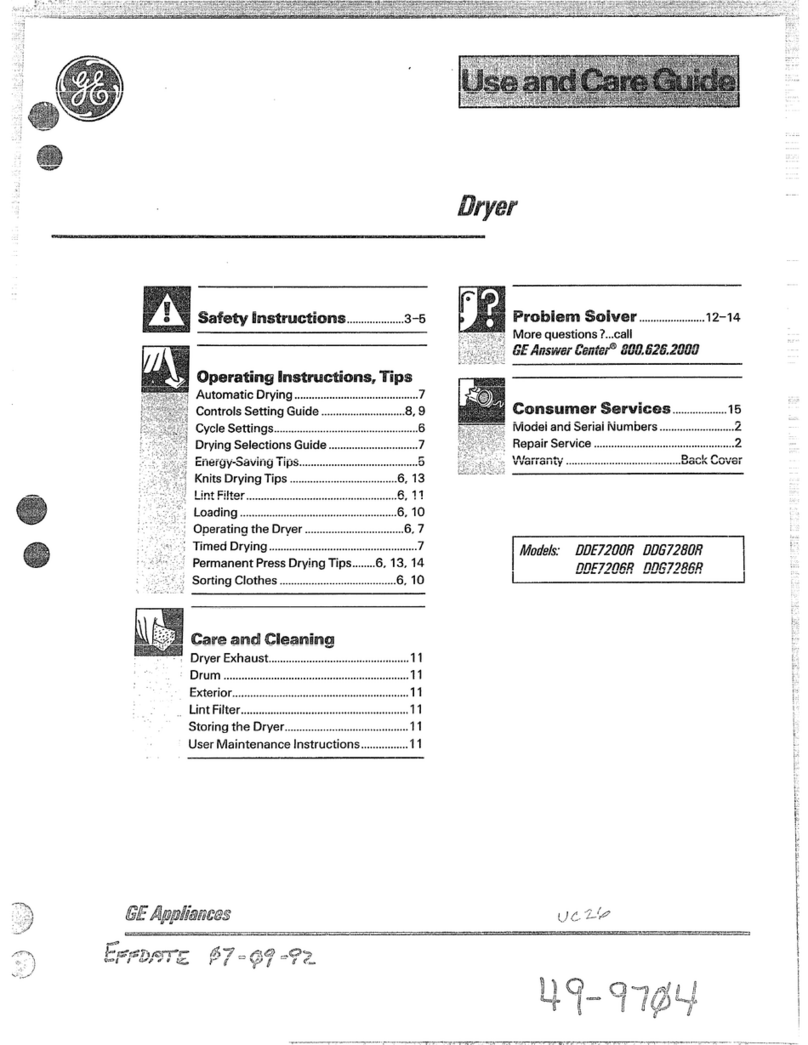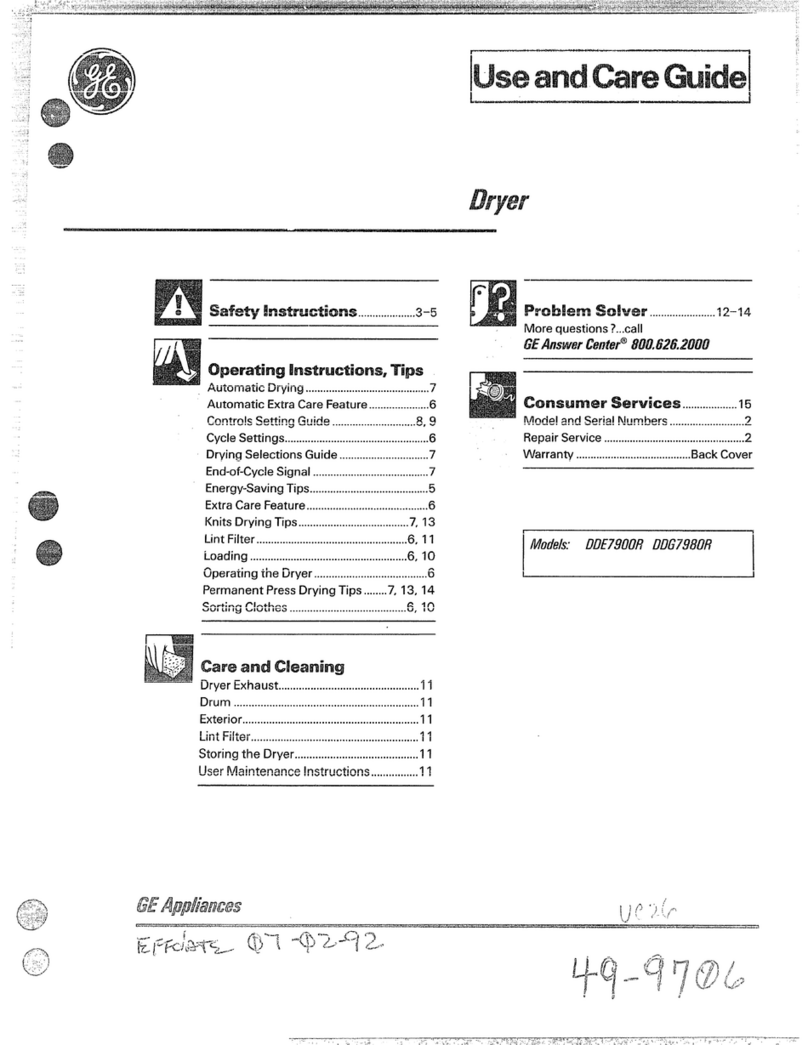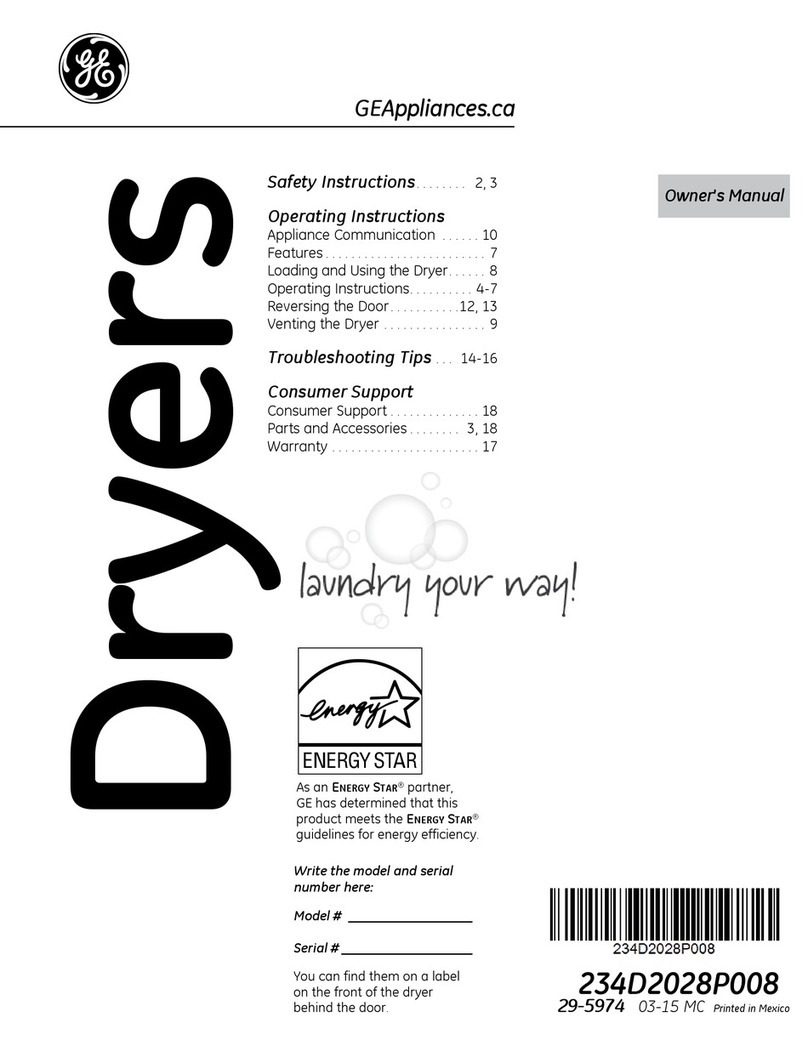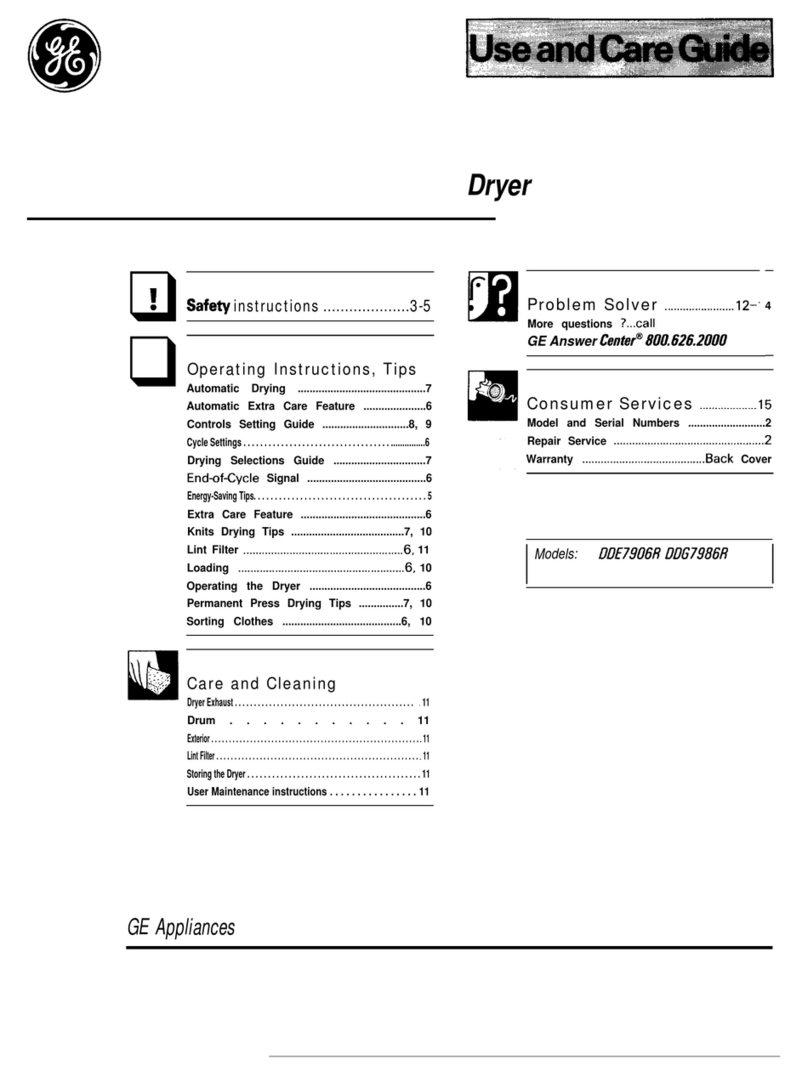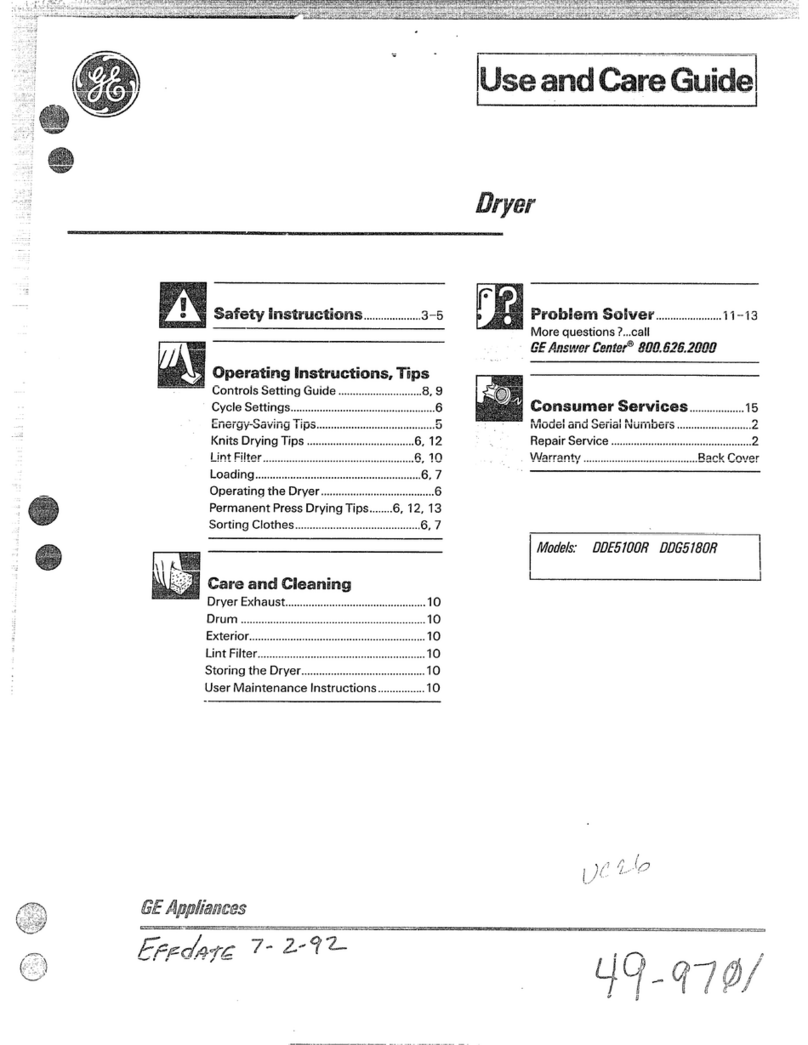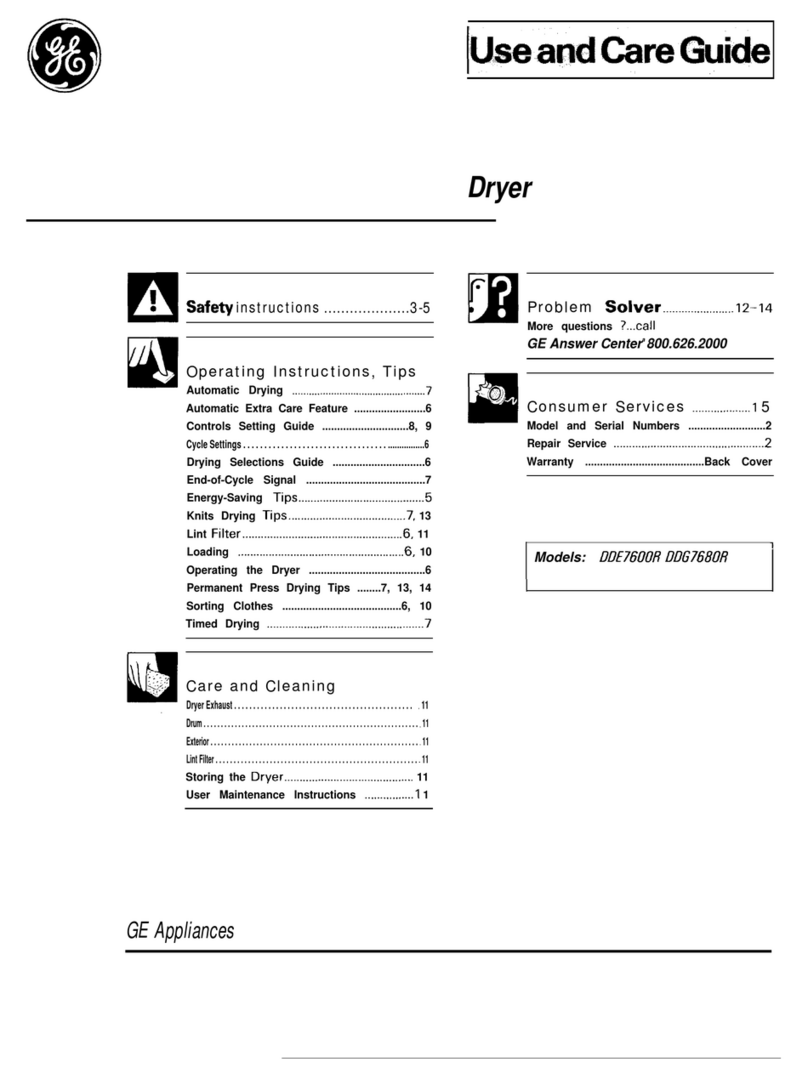IMPORTANT SAFETY NOTICE
The
California Safe Drinking Water and Toxic
Enforcement Act requires the governor of
California to publish a list of substances known
to the state to cause cancer, birth defects or other
reproductive harm and requires businesses to warn
ctistomers
of potential exposure to such substances.
Gas appliances can cause minor exposure
to
four of these substances, namely benzene,
carbon monoxide, formaldehyde and soot,
caused primarily by the incomplete combustion
of natural gas or
LP
fuels.
Properly adjusted dryers will minimize incomplete
combustion. Exposure to these substances can be
minimized further by properly venting the dryers
to the outdoors.
A
Warning—To reduce the risk of fire,
electric shock, or injury to persons
when using your appliance,
follow
basic
precautions, including the following:
●
Use this appliance only for its intended
purpose
as described in this Use and Care Book.
@
●
This dryer must be properly installed
‘~.{{’~
~+
, and located in accordance with the
.-.*
Installation Instructions before it
is used.
If you did not receive an Installation
Instructions sheet with your dryer, you can obtain
one by calling, toll free, the GE Answer Center”,
800.626.2000.
—Properly ground to conform with
all governing codes and ordinances.
Follow
details in Installation Instructions.
—Locate where the temperature is above
50°F.
(lO°C.)
for satisfactory operation of the dryer
control system. Do not install or store the
dryer where it will be exposed to the weather.
—Connect to a properly rated, protected
and sized power supply circuit
to avoid
electrical overload.
—Etiausting
to the outside is STRONGLY
RECOMMENDED
to prevent large amounts
of moisture and lint from being blown into the
room. Carefully follow the Exhausting Details
in the Installation Instructions.
●
Do not repair or replace any
part of the appliance or attempt
any servicing unless specifically
recommended in this Use and Care Book or
in published user-repair instructions that you
understand and have the
skills
to carry out.
n
●
When disconnecting this appliance
xa
@
Pull by
the
plug rather than the
4
cord
to avoid damage to the cord
or junction of cord and plug. Make sure that
the cord is located so that it will not be stepped
on, tripped over or otherwise subjected to
damage or stress.
To Minimize the Possibility
of a Fire Hazard
●
Exhaust Duct—See Installation Instructions.
Use only rigid metal or flexible
metil
4“
diameter ductwork inside the dryer cabinet
or for exhausting to the outside.
USE OF
PLASTIC OR OTHER COMBUSTIBLE
DUCTWORK CAN CAUSE A FIRE. FOIL OR
OTHER EASILY PUNCTURED DUCTWORK
CAN CAUSE A FIRE IF IT COLLAPSES OR
BECOMES OTHERWISE RESTRICTED IN
USE OR DURING INSTALLATION.
●
Do not use heat to dry articles containing rubber,
plastic, or similar materials
(such as padded
bras, tennis shoes, galoshes, bath mats, rugs, bibs,
baby pants, plastic bags, etc.) as these materials
may melt or bum. Also, some rubber materials,
when heated, can under certain circumstances
produce fire by spontaneous combustion,
●
Do not store items that may bum or melt
(such as clothing, paper material, plastics
or plastic containers, etc.) on top of the dryer
during operation.
(continued next page)
3

